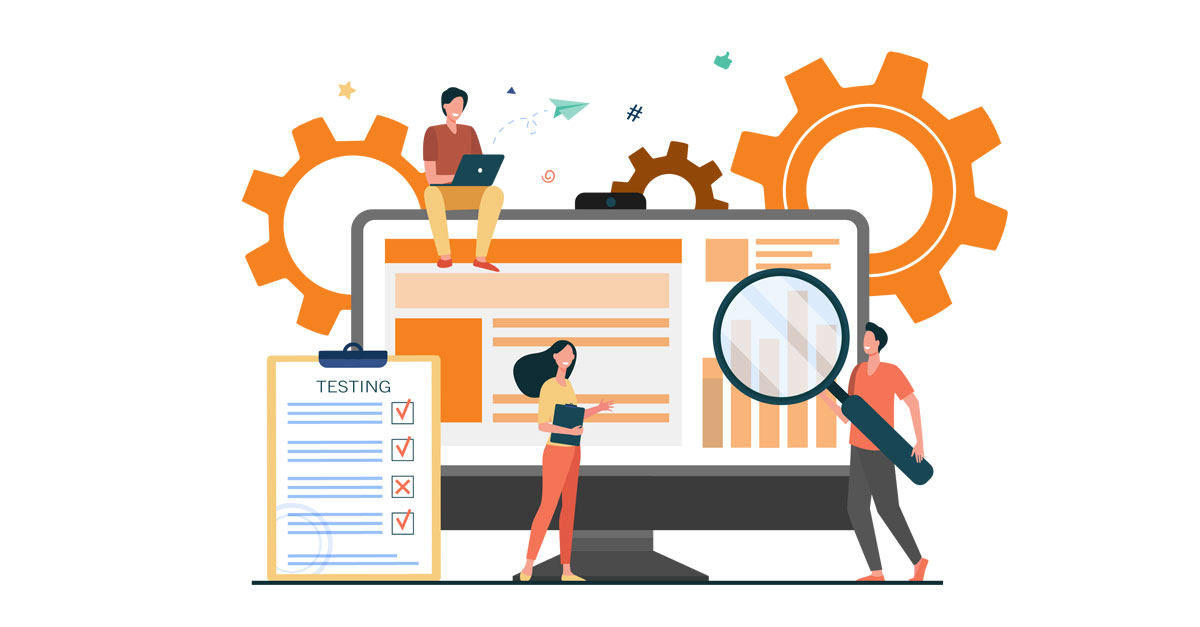Software testing is a broad topic, and understanding the same requires us to look into different testing procedures and types. This blog is a guide for someone looking to understand functional testing.
What is Functional Testing?
If you want to test a particular product in comparison to the application, functional testing is what you need. Every software component is compared to if the output is aligned with the user’s expectations.
The testing is done through the sample inputs where the outcome is compared with the actual results.
Some examples of functional testing are;
- Are users successfully logging in to the application after entering legitimate credentials?
- Is the payment gateway rejecting the input when an invalid credit card number is entered?
- Is the “Add New Record” screen accepting and saving the inputs successfully?
What is tested in Functional Testing?
As discussed above, the prime objective of functional testing is to check the functionality of your software. It mainly focuses on the;
- Mainline Functions: This is used to test the primary function.
- Basic usability: This allows you to check whether you can navigate hassle-free.
- Accessibility: Is the software accessible to the user?
- Error conditions: This testing checks for errors.
What are the types of Functional Testing?
Based on the scenario, there are different categories of functional testing, as discussed below;
1. Unit Testing- This type of testing is done by developers who work on the scripts of the code and test each unit in comparison to the software requirements. It consists of the following three processes:
- Line coverage
- Code path coverage
- Method coverage
2. Smoke Testing- After the release of every build, this test is done to ensure the software stability.
3. Sanity Testing- This testing is done after smoke testing and is used to verify the majority of functionalities of the application both by itself and in combination with other elements.
4. Regression Testing- This ensures that every change made to the codebase does not disrupt the existing functions.
5. Integration Testing- If you are operating in combination integration testing is done and works effectively.
6. Usability Testing: As the name suggests this testing is done to assess how a consumer perceives a particular product.
Also Read:
– What is Software Testing? Everything you need to know
– Functional Testing vs. Automation Testing: Understanding the Difference
What are the steps of Functional Testing?
Functional testing usually follows the below sequence:
1. Identification of the testing goals
The testing goals are what a user expects the software features to be. Validating the application to match the goals is the primary step of functional testing.
2. Test Scenarios
In this step you need to develop a list of all the possible test scenarios. These scenarios would describe the different ways in which the quality would be used.
3. Formulating the test data
You should create test data to simulate under normal conditions by identifying the test cases that you have created. You can either enter the test data or it can be identified automatically.
4. Design Test cases
Create the test cases based on desired outcomes for the test inputs. For example, an error message should be displayed whenever the user enters an invalid credit card number.
5. Execute the test cases
Comparison of the test cases with actual outcomes is imperative to understand how well your product is performing. If you have failed tests the tests should be recorded.
6. Track and Resolve the defects
Once the defects are identified, the changes to the application should be executed again to confirm the resolution.
What are the best practices for Functional Testing?
To efficiently perform the practice of functional testing, here are some best practices for the same;
Pick the proper test case.
It is imperative to select the suitable test cases that you are going to automate. It is a good idea to skip automation for tests requiring setup and configuration during or after execution.
Dedicated Automation team
The automation process requires time, effort, and, more importantly, a certain amount of specialized knowledge and skill-set. Before deploying automated tests, it is essential to analyze the skill and experience level of QAs.
Data-Driven tests
It is advised to write automated test cases in a way that they are usable. To do this, data should be written in a reusable manner. The data is in sources such as XML files, text, or property files.
Test frequently
Prepare an automation test bucket and strategize for frequent executions. With these QAs, you can enhance the test automation framework to make it more robust.
Closing Words
Functional testing is an integral part of all software testing procedures. It ensures that a system operates exactly as it is expected to. Also, functional testing is done from the user’s perspective.
Although functional testing is a challenge to many organizations, the benefits of adequately executed automated functional testing outweigh the challenges.
Netsmartz has been leveraging the power of functional testing to help organizations meet their quality goals & optimize QA processes.
Hire remote ready, elite QA Testing experts with strong technical skills at unbeatable prices.
Schedule Interview
Summary
Kickstart Your Project With Us!
Blog
Popular Posts
CONTACT US
Let's Build Your Agile Team.
Experience Netsmartz for 40 hours - No Cost, No Obligation.
Connect With Us Today!
Please fill out the form or send us an email to
 Don't Miss Out:
Don't Miss Out: 







